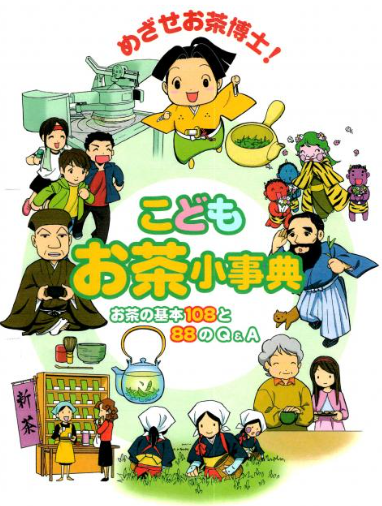
Tea Information From 日本茶BANK

2022.06.07 Update
【Basic Knowledge of Tea】Shizuoka Prefecture has created a tea encyclopedia for elementary school students, recommended for adults who want to learn more about tea.
#Shizuoka prefecture
#Tea Knowledge
目次
Shizuoka Prefecture accounts for about 40% of the nation’s tea plantation area
Shizuoka is to tea what Shizuoka is to tea. Shizuoka Prefecture is, as it is well known, Japan’s number one tea-producing area.
There are at least 20 tea production areas in the prefecture, including Makinohara, Iwatahara, Mt.
Shizuoka Prefecture is also the biggest tea drinker in Japan
Shizuoka Prefecture is also Japan’s number one tea drinking prefecture.
For example, according to the “Household Survey” conducted by the Statistics Bureau of the Ministry of Internal Affairs and Communications in 2002, the national average annual expenditure per household for green tea was 3,817 yen. In contrast, the top-spending city, Shizuoka City, Shizuoka Prefecture, spent 9,191 yen. This is more than 2.4 times the national average. In terms of annual consumption, while the national average is 827g, Shizuoka City, Shizuoka Prefecture, the largest purchaser, consumes 2,323g, which is 2.8 times more than the national average.
Translated with www.DeepL.com/Translator (free version)

Along with Shizuoka Prefecture, Kagoshima and Mie Prefectures are the three major tea-producing prefectures in Japan, and both purchase and consume the largest amount of tea in the country.
People living in tea-producing areas are surrounded by tea gardens and people involved in tea-related businesses, and tea is very close to their daily lives, so the habit of drinking tea seems to have become second nature to them.
Translated with www.DeepL.com/Translator (free version)
Shizuoka Prefecture’s “Tea Education,” a dietary education program using tea
In recent years, the number of growers, production, cultivation area, consumption, and many other aspects of Japanese tea have been declining, and Shizuoka, “Japan’s number one tea-producing region,” is no exception to this trend.
In this situation, Shizuoka Prefecture enacted the “Fujinokuni ‘Tea Capital of Shizuoka’ Charter” in 2013 and the “Ordinance on the Promotion of Shizuoka Tea Drinking by Elementary and Junior High School Students” in 2016. In 2016, we enacted the “Ordinance on the Promotion of Shizuoka Tea Drinking by Students in Elementary and Junior High Schools” and are making efforts to pass on tea to the next generation.
The purpose of the above “Ordinance Concerning the Promotion of Shizuoka Tea Drinking by Students in Elementary and Junior High Schools” is “to make Shizuoka tea more accessible to students, to cultivate a sound mind and body, to nurture a rich humanity, and to drink Shizuoka tea as a daily habit.
It is a wonderful idea to educate students to know their hometown culture well and to pass it on with pride!
In addition, the nature of tea allows us to deepen our understanding of lifestyle and health through tea, and to develop human relations and communication skills through “tea drinking” with family and close friends around the dinner table!
Tea education is a good thing!
Translated with www.DeepL.com/Translator (free version)
Shizuoka Prefecture’s Tea Encyclopedia for Elementary School Students
Shizuoka Prefecture has created an encyclopedia that explains the history and culture of tea, its cultivation and production methods, its ingredients and benefits, and how to make a delicious infusion.
The name of the encyclopedia is
Aim for it! Tea Doctor: A Small Encyclopedia of Tea for Children – 108 Basics of Tea and 88 Q&A”.
It is a condensed, easy-to-understand book of basic knowledge about tea for elementary school students, and is recommended for adults who are beginning to be interested in tea and want to know more about the basics!
It can be downloaded free of charge by anyone from the official website of Shizuoka Prefecture, so please take a look through it.